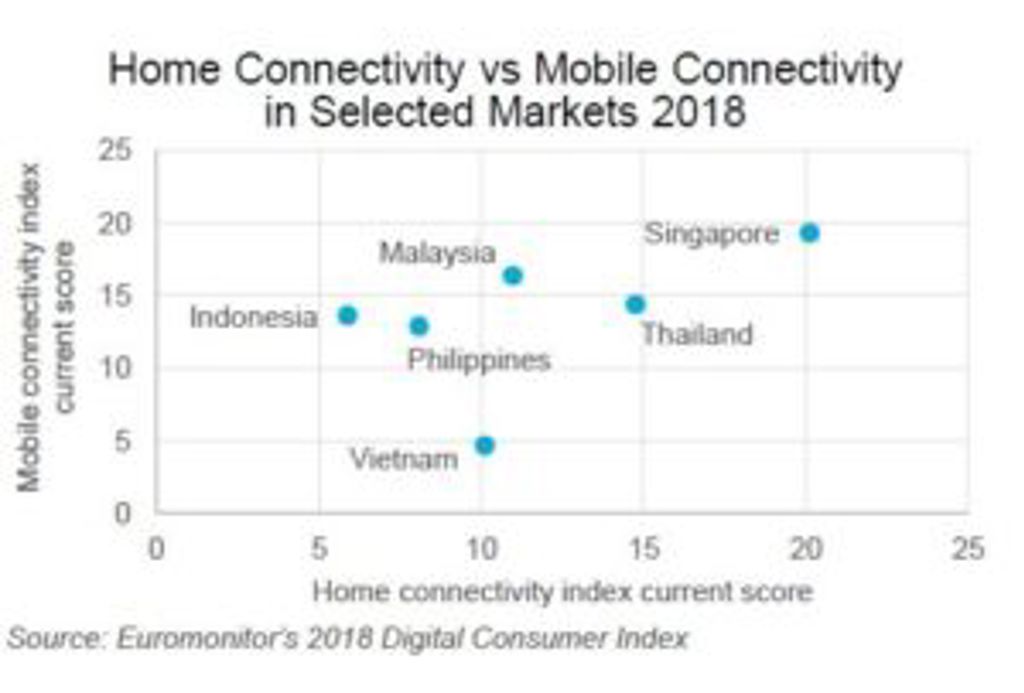Smart devices have ushered in a borderless internet, giving consumers instant access to entertainment, knowledge, social sharing and more. Digital connectivity has altered all aspects of life including cooking and dining habits, creating opportunities for food and appliance firms alike. In fact, foodservice and the home kitchen are springboards for engaging the connected consumer. With the prevalence of “foodtertainment” on social media, the proliferation of third-party food delivery and recipe applications, and brands racing to launch connected kitchen appliances.
These trends can be observed worldwide, including in Southeast Asia. Although challenges continue to impede higher uptake of connected appliances in the region, Southeast Asia demonstrates potential with its relatively youthful and hyperconnected consumer base.
Despite these challenges, appliance manufacturers in the region are making strides in engaging connected consumers in the kitchen – introducing digital platforms that not only equip users with practical cooking skills, but also inject positive emotion and “soul” into the cold artificial intelligence of connected products – demonstrating a tangible value to a key aspect of daily life: sustenance for self and loved ones.
Connectivity shows tangible value in the kitchen
The rise of food technology start-ups offering consumers a range of services across the meal journey – such as recipe advice, grocery delivery, shoppable recipes, etc – presents opportunities for appliance firms to capture a larger portion of the meal planning and preparation process, joining up their expertise in hardware with software to offer end-to-end solutions.
In 2018, Electrolux partnered with recipe application, SideChef, which offers recipes, step-by-step cooking instructions and voice-assisted cooking to guide home cooks. This partnership is focused on Electrolux’s business in the region, with the SideChef-powered Electrolux Life mobile application targeting consumers in Singapore, the Philippines, Malaysia, Thailand, Indonesia and Vietnam.
The company’s focus on its mobile app is relevant to Southeast Asia where mobile surpasses home connectivity in several markets. Low rates of home connectivity would limit the widespread adoption of an entirely connected kitchen, which may require a strong home network to function optimally.
Such mobile apps thus act as a gateway to the concept of connected cooking, allowing individual brands to stay ahead of the game and engage connected consumers in the region until the infrastructure catches up to support connectivity across multiple appliances.

Opportunities both in-home and out-of-home
Connectivity has also enabled new out-of-home dining formats, creating marketplaces for home-cooked meals from private homes via C2C apps such as Hcook and ShareFood, alongside opportunities in commercial food delivery.
Private dining, in which chefs prepare a luxurious meal for guests in an intimate setting, and food delivery services represent a double-edged sword – exposing more consumers to cooking and new cuisine – possibly increasing their interest in replicating the same at home, while also reducing the incentive to prepare meals for oneself. Although this may undermine the uptake of cooking ingredients and appliances in the B2C space (i.e. home cooks), it creates new opportunities in the B2B space (e.g. central kitchens).
The region is witnessing the emergence of central kitchens by third-party delivery services, such as Deliveroo Editions and Favourites by foodpanda. Central kitchens (interchangeably referred to as “ghost kitchens” or “super kitchens”) are food preparation locations that also require food ingredients and commercial kitchen appliances, and if delivery apps continue to become more significant across the region, this could widen opportunities for future B2B partnerships.
Digital engagement is the future
Digitalisation and connectivity allow brands to establish more touchpoints with connected consumers, paving the way for new forms of accessing cooking on the consumer end. On the industry end, connectivity supports new business models and new forms of strategic partnerships. It is up to food and appliance firms to purposefully seize their respective gains from connectivity both in- and out-of-home.
Understand how Connected Consumers and other global megatrends might take form in the context of Southeast Asia: “Cooking in Southeast Asian Kitchens: Innovations in Food and Appliances.”

